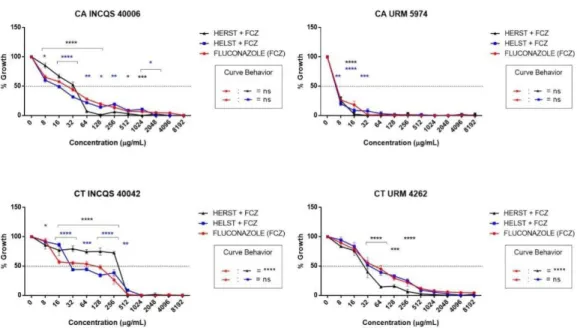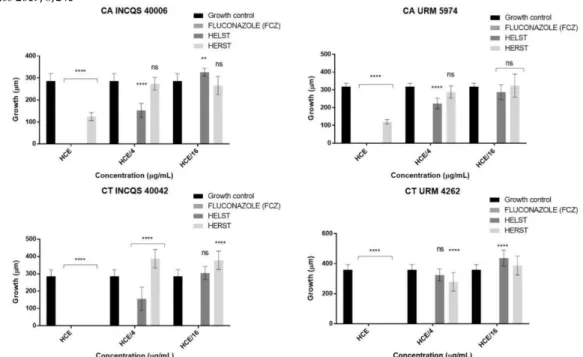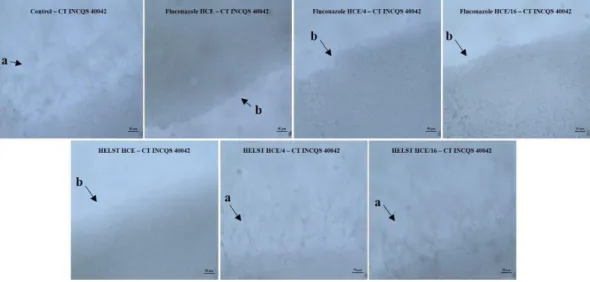ANÁLISE QUÍMICA E EFEITO ANTIFÚNGICO DE Spondias tuberosa Arruda (UMBU) CONTRA LEVEDURAS DO GÊNERO Candida / Antonia Thassya Lucas dos Santos Santos. Dissertação (Mestrado) - Universidade Federal Rural de Pernambuco, Programa de Pós-Graduação em Etnobiologia e Conservação da Natureza, Recife, 2020. Ao Laboratório de Farmacologia e Produtos Naturais - LFPN da Universidade Regional do Cariri - URCA, pela secagem dos extratos, em especial ao Prof. dr. .
Herbário Dárdano de Andrade Lima - HCDAL da Universidade Regional do Cariri - URCA pela identificação da espécie, em especial à Professora drª. Colegas do Laboratório de Micologia Aplicada do Cariri - LMAC e do Laboratório de Microbiologia e Biologia Molecular - LMBM, para um ambiente de trabalho agradável e momentos de compartilhamento de conhecimento, trabalho e diversão. Baseado neste contexto e na importância da conservação da espécie, este trabalho teve como objetivo analisar a composição química e avaliação comparativa da atividade antifúngica e potencial inibidor de virulência de extratos aquosos e hidroalcoólicos de folhas e raízes de Spondias tuberosa Arruda (umbu) contra cepas de Candida.
Baseado neste contexto e na importância da conservação da espécie, este trabalho teve como objetivo analisar a composição química e a ação antifúngica e o potencial inibidor de virulência de extratos aquosos e hidroalcoólicos de folhas e raízes de Spondias tuberosa Arruda (umbu) para serem avaliados comparativamente contra cepas do gênero Candida. No semiárido brasileiro, muitas plantas apresentam potencial farmacológico, entre elas a Spondias tuberosa Arruda (Umbu), espécie de grande importância econômica, social e ecológica.
FUNDAMENTAÇÃO TEÓRICA
- GÊNERO Spondias
- ESPÉCIE Spondias tuberosa Arruda
- GÊNERO Candida
- ESPÉCIE Candida albicans
- ESPÉCIE Candida tropicalis
- RESISTÊNCIA E VIRULÊNCIA FÚNGICA
- FLUCONAZOL
- IMPORTÂNCIA DE ESTUDOS FITOQUÍMICOS
O extrato etanólico da casca da planta não promoveu toxicidade aguda ou citotóxica (BARBOSA et al., 2016). A casca do tronco é utilizada para enxaquecas, redução do colesterol, cicatrização de feridas e inflamações (SOARES; SIQUEIRA; DE ALBUQUERQUE, 2012; JÚNIOR et al., 2014). No entanto, esta planta enfrenta diversos problemas naturais e antrópicos que podem levar à sua extinção (MERTENS et al., 2017).
Infecções oportunistas devido a espécies de Candida ocorrem frequentemente em ambientes de terapia intensiva (SHOKOHI et al., 2017). Candida albicans é uma espécie patogênica oportunista que causa infecções superficiais e sistêmicas em indivíduos imunocomprometidos (CHANG et al., 2018). É um patógeno fúngico emergente com altas taxas de mortalidade associadas de 40 a 70% (CHEN et al., 2014).
Certas espécies colonizam a pele ou superfícies mucosas como comensais, outras causam infecções invasivas (JIANG et al., 2016). Assim, a resistência aos medicamentos antifúngicos é um fenômeno complexo que envolve múltiplos mecanismos (XIE et al., 2014).
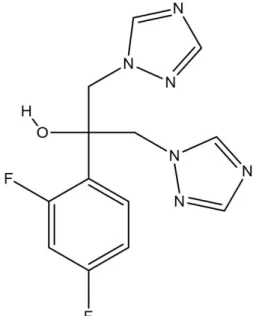
UPLC-MS-ESI-QTOF analysis and antifungal activity of hydroalcoholic leaf and root extracts of Spondias tuberosa Arruda. The preliminary phytochemical analysis of the extracts revealed the presence of several classes of metabolites, such as: Alkaloids, steroids, phenols,. The action of the extracts and fluconazole on the cell viability curve can be seen in Figure 1.
The MFC of the extracts against all tested strains was ≥16,384 µg/mL, as well as the fluconazole MFC against C. When combined with the antifungal agent fluconazole, the HELST enhanced the effect of the drug, where a synergistic effect against CA INCQS 40006 (8 to 256 µg/mL) and CT INCQS 40042 (8 to 512 µg/mL) were observed. Candida tropicalis; INCQS: National Institute for Quality Control in Health; URM: University Recife Mycology; HELST: Hydroalcoholic extract of leaves of Spondias tuberosa; HERST: Hydroalcoholic extract of the roots of Spondias tuberosa; FCZ: Fluconazole; PS: not significant; *—Statistical significance with p <.
However, antagonism was observed against the standard strain CT INCQS 40042 (16 to 256 µg/mL), where the combination with the extract reduced the effect of the drug. CA: Candida albicans; CT: Candida tropicalis; INCQS: National Institute of Quality Control in Health; URM: Recife University Mycology; HELST: Hydroalcoholic extract of Spondias tuberosa leaves; HERST: Hydroalcoholic Extract of the Roots of Spondias tuberosa FCZ: Fluconazole; HCE: Highest Estimated Concentration; ns: not significant. Young healthy roots and leaves collected from the upper part of the plant were used for extract preparations.
Identification of the compounds present in the extracts was performed in an Acquity® UPLC system coupled to a Quadrupole/Time of Flight (QTOF) system (Waters Corporation, Milford, MA, USA), provided by the Chemical and Natural Products Laboratory, Embrapa Tropical Agro Industry (Fortaleza, Ceará). Absorbance results were used to construct the cell viability curve; from the mean cell viability curve, the IC50 values of the extracts and fluconazole were calculated [45]. The combination of the extracts with the reference drug (fluconazole) was performed to see if the antifungal activity was altered by the presence of the extract in the medium.
Preliminary phytochemical analysis of the extracts demonstrated the presence of phenolic and flavonoid compounds in both extracts. The activity of the extracts against the tested strains was not clinically relevant, as direct contact growth inhibition only began at high concentrations. Evaluation of the antifungal effect of different concentrations of Curcuma longa on Candida albicans: An in vitro study.
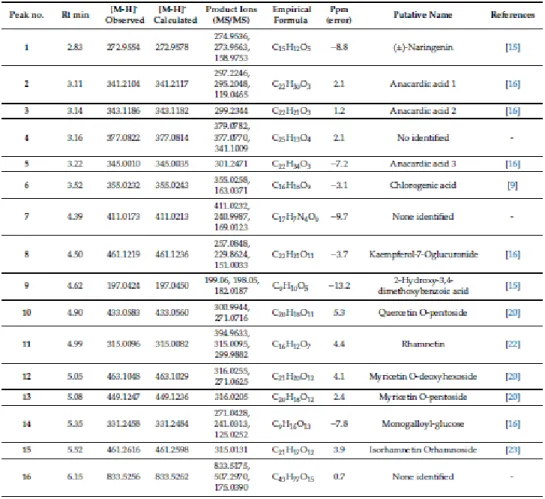
37 COMPARATIVE ANTIFUNGAL ACTIVITY OF THE Spondias tuberosa ARRUDA AQUEOUS LEAF AND ROOT EXTRACTS AND UPLC-MS-ESI-. The association of the extracts with fluconazole resulted in IC50 values ranging from 2.62 µg/ml to 308.96 µg/ml. The MFC of the extracts was ≥ 16,384 µg/ml for all strains tested, while fluconazole achieved an MFC of 8192 µg/ml against Candida albicans strains.
By combining the extracts with fluconazole, the MFC and IC50 values were reduced, thus increasing the efficacy of the drug. Conclusions: In view of the results obtained, EALST may be an alternative for the treatment of fungal infections, as it presented results similar to those of EARST. For the preparation of aqueous extracts by infusion, young leaves and roots were used, which were cut into smaller pieces to increase the contact surface with the extractant (water).
For the evaluation of the antifungal activity, two Candida albicans - CA INCQS 40006 and Candida tropicalis - CT INCQS 40042 standard fungal strains were obtained from the Oswaldo Cruz Culture Collection of the National Institute for Quality Control in Health (INCQS), while the two Candida albicans - CA URM 5974 and Candida tropicalis - CT URM 4262 clinical isolates were provided by the Recife Micoteca University (URM) of the Federal University of Pernambuco - UFPE. The results obtained from the ELISA readings were used to construct the cell viability curve and determine the IC50 of the extracts and fluconazole (Morais-Braga et al., 2016). After homogenization of the solution in the well, subcultures were performed in a Petri dish containing SDA and a guide card by transferring a small amount of the test solution (medium + inoculum + natural product).
The effect of the combination of the extracts with the reference drug (fluconazole) was performed to verify the potentiating effect of the antifungal by the addition of the extracts. Preliminary phytochemical analysis of the extracts revealed the presence of metabolite classes such as: alkaloids, phenols, flavonoids (flavanones, anthocyanins, anthocyanins, leucoanthocyanins, catechins) and triterpenoids (Table 1). The inhibition of 50% of the microorganism population (IC50) for the EALST occurred at high concentrations for all tested strains, while the EARST obtained an IC50.
In the study by Santos et al. 2019), the authors analyzed the chemical composition of the S. 2015), identified the compounds kaempferol and monogalloyl glucose, which were also found in the current analysis, in the LC-MS/MS analysis of de Mangifera indica L. 2012) found that flavonoids may be responsible for the reduction of hyphal growth, identifying the compound kaempferol, which was also detected in the leaves of the current study, in the honey flavonoid extract.
Study of the in vitro antioxidant, antimicrobial and thrombolytic activity of the exocarp of Spondias pinnata (Anacardiaceae). UPLC-MS-ESI-QTOF analysis and antifungal activity of Spondias tuberosa Arruda leaf and root.

CONSIDERAÇÕES FINAIS
PRINCIPAIS CONCLUSÕES
ORÇAMENTO
Ciclo reprodutivo do imbuzeiro (spondias tuberosa, arr. cam.) no semi-árido do nordeste brasileiro/Reproductive cycle of the imbu tree. spondias tuberosa arr. ca.) in the semi-arid region of northeastern Brazil. Rapid ethnobotanical diagnosis of the indigenous areas of Fulni-ô (NE Brazil): floristic research and local conservation priorities for medicinal plants. Phytochemical characterization of extracts of spondias sp and Spondias tuberosa arruda câmera occurring in paraiba semiarid.
Candida albicans interaction with host cells: virulence factors, host defenses, escape strategies and. Phenology of Spondias tuberosa Arruda (Anacardiaceae) under different landscape management regimes and a proposal for a rapid phenological diagnosis using local knowledge. Spondias tuberosa (Anacardiaceae) leaves: profiling of phenolic compounds by HPLC‐DAD and LC–MS/MS and in vivo anti‐inflammatory.


